15 most dangerous dogs in the world. Dogs are always one of the first animals to consider when there is the need for a pet and children are many times the reason for them. There is nothing to a child than to hear that he or she is getting a puppy. Little do we know, however, that not all dogs fit a family’s lifestyle. While you should carefully consider the dog’s temperament and the kids that are in the household, After all, little humans often show a natural aptitude for scaring and annoying dogs. They stare, move quickly, and often speak (or scream) in high-pitched voices. Most dogs think children are playmates and aren’t figures of authority in the same way adults are. it would be wise to also think of the breed of dog and its origins.
More than 50 percent of all dog bite victims are children. While only 12 percent of adults require medical treatment, 26 percent of all children need to go to the emergency room or see a doctor. The most likely place for the attack to occur is in the home of the victim. The second most likely place is at the home of a friend of the victim. Seventy-seven percent of biting dogs are owned by the victim’s family, a relative or a friend of the family.
According to the CDC, dog bites are a greater health problem for children than measles, mumps and whooping cough combined. They are more common than injuries from bike accidents, playground injuries, mopeds, skateboards or ATVs. Dog bite treatments cost more than a billion dollars each year. The most common victims are boys ages 5 to 9, and children, in general, are most frequently bit in the face, neck, and head.
Therefore, it will conclusively be wise to give into consideration the dog breeds you have to AVOID if you've got a child in your house.
the Shih Tzu is a breed that can be difficult to own. They can make great lap dogs and companions for adults and older children, but young kids often find it difficult to understand that a puppy is not always in the mood to play.
Shih Tzus are often good with other pets and happy dogs, but the wrong owner will let their stubborn and aggressive nature shine through. This, of course, is the owner’s fault (and not the breed’s), but it makes them difficult to be trusted with young children. They’re notorious for darting around, chewing on shoelaces, and tripping up even agile adults who understand why puppies behave the way they do.
If they do develop the Small Dog Syndrome, then they can be very grouchy and bite if irritated or scared. They can develop separation anxiety and get very territorial if allowed to believe they are the head of the pack, an attitude in this breed that children often encourage.
14. ENGLISH TOY SPANIEL
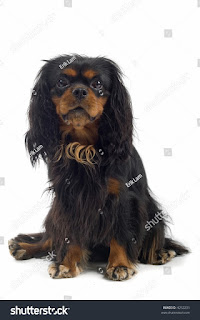
Now, most of you will be wondering why this? This dog is a mystery for the world. The AKC ranks it 130th in popularity among dog owners. The small size of this dog shall make it the favorite among the kids. Wondering why isn't it more famous? There is a problem called Small Dog Syndrome where children perceive the dog as a toy and inanimate object and treat it as such. This is not exclusive to the English Toy Spaniel, but if a child unintentionally mistreats the dog (its perception) then it, like the Chihuahua will possibly respond very violently.
Part of the reason for this violent reaction is the English Toy Spaniel tends to have a dominating personality, a trait that must be brought in line quickly or else they will become consistently aggressive. English toy spaniels don’t tolerate rough handling.
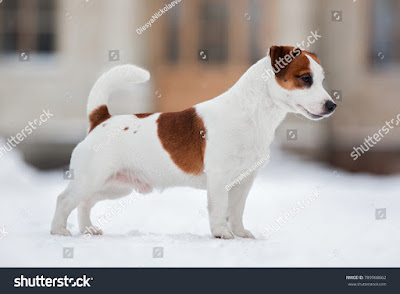 Another one of those tiny dogs that one can set his heart on. But these terriers are not ideal for infants or toddlers. The reason behind such is the exuberant nature of these dogs that are way too much overwhelming for young kids. These dogs require older kids for their maturity and the ability to understand and absorb the boisterous nature of the dogs without getting harmed. So, it will be better to wait until your child grows up before you own one of these.
Another one of those tiny dogs that one can set his heart on. But these terriers are not ideal for infants or toddlers. The reason behind such is the exuberant nature of these dogs that are way too much overwhelming for young kids. These dogs require older kids for their maturity and the ability to understand and absorb the boisterous nature of the dogs without getting harmed. So, it will be better to wait until your child grows up before you own one of these.
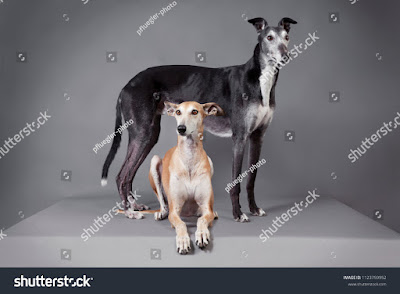 Greyhounds are calm, quiet, and slender dogs. They’re known for being the fastest dog breed in the world. But they aren’t always a good match for families with small children. These dogs prefer peace and quiet and might not do well in a loud household. Most freeze when challenged or threatened. But sometimes, they become defensive and protective of their space. They also have a strong instinct to chase anything else that runs (which sometimes might include your child). Greyhounds are emotionally sensitive to stress and changes in their schedule. So a hectic household might not be the best fit. And greyhounds have skin that tears easily, so accidental run-ins with active children or falling toddlers could hurt both parties involved.
Greyhounds are calm, quiet, and slender dogs. They’re known for being the fastest dog breed in the world. But they aren’t always a good match for families with small children. These dogs prefer peace and quiet and might not do well in a loud household. Most freeze when challenged or threatened. But sometimes, they become defensive and protective of their space. They also have a strong instinct to chase anything else that runs (which sometimes might include your child). Greyhounds are emotionally sensitive to stress and changes in their schedule. So a hectic household might not be the best fit. And greyhounds have skin that tears easily, so accidental run-ins with active children or falling toddlers could hurt both parties involved.
Siberian Huskies are rugged and beautiful dogs that are great companions for active people who love the outdoors. But like the Alaskan malamute, a Siberian husky isn’t an ideal fit for families with small children. These dogs play rough, even when they’re young. If allowed to roughhouse, a husky can inadvertently nip or even bite while playing with your child. They can unintentionally hurt infants. So despite their even temperaments, huskies aren’t great companions for young or small children. Although Huskies look puffy and soft, reports say that 15 people have died in the last 20 years because of them. Since these dogs are very energetic, they have to be taken on regular walks. A well-trained Huskey will be very loyal to its family’s lives.
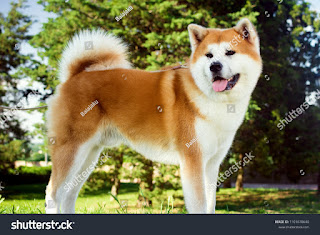 Akitas are known to be great family companions. But they are guard dogs, which means they have generations of instinct to serve as their family protector. An Akita will react to anything or anyone perceived as a threat. Akitas don’t like to be teased and don’t react well to children outside of the family. That can be problematic when your children have play dates with their friends. If you’re set on getting an Akita, keep in mind it’s best to get a puppy who will be raised around kids, instead of expecting an adult dog to suddenly tolerate children’s behavior and noise level. And keep in mind some Akitas who grew up without any contact with children don’t readily accept them.
Akitas are known to be great family companions. But they are guard dogs, which means they have generations of instinct to serve as their family protector. An Akita will react to anything or anyone perceived as a threat. Akitas don’t like to be teased and don’t react well to children outside of the family. That can be problematic when your children have play dates with their friends. If you’re set on getting an Akita, keep in mind it’s best to get a puppy who will be raised around kids, instead of expecting an adult dog to suddenly tolerate children’s behavior and noise level. And keep in mind some Akitas who grew up without any contact with children don’t readily accept them.
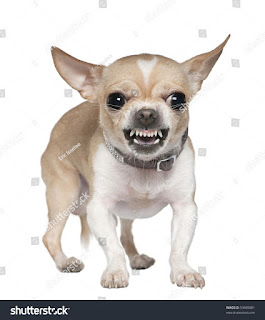 Although this tiny breed is so small it can almost be seen as a toy rather than a real dog, Chihuahuas are known to see kids as a threat and attack them without warning. These little gremlins are also very nervous and territorial, meaning they can easily hurt if roughly handled. Chihuahuas are notoriously feisty and can even get aggressive. That means if you have small children, a Chihuahua might not be the right dog for you. If you get a puppy, a Chihuahua can be trained to coexist with children. But kids also need to be taught the correct way to interact with the dog. Chihuahuas are small and easy to injure if you handle them incorrectly. Even petting such a small dog with too much force can cause injuries. Many Chihuahuas don’t tolerate rambunctious children, and some will even get agitated simply when children are running around in their vicinity.
Although this tiny breed is so small it can almost be seen as a toy rather than a real dog, Chihuahuas are known to see kids as a threat and attack them without warning. These little gremlins are also very nervous and territorial, meaning they can easily hurt if roughly handled. Chihuahuas are notoriously feisty and can even get aggressive. That means if you have small children, a Chihuahua might not be the right dog for you. If you get a puppy, a Chihuahua can be trained to coexist with children. But kids also need to be taught the correct way to interact with the dog. Chihuahuas are small and easy to injure if you handle them incorrectly. Even petting such a small dog with too much force can cause injuries. Many Chihuahuas don’t tolerate rambunctious children, and some will even get agitated simply when children are running around in their vicinity.
Pit bulls include the American pit bull terrier, the Boston Bulldog, American Staffordshire Terrier, Cane Corso, and even Dogo Argentino. Needless to say, all of these dogs have exhibited a history of attacking humans. Pit bull type dogs have a very strong jaw and usually tend to "hold and shake" their victim, making it extremely difficult to pry their jaws apart. Most of these dogs are illegal to own in many countries.
 Alaskan Malamutes are great dogs for people who love the outdoors. But they can be difficult both to train and to live with. They become rambunctious and bored without sufficient physical exercise or challenging activities. Even Alaskan malamute puppies are large and powerful. And they have the tendency to play extremely rough, which is less than ideal if you have small children in the house. Additionally, Alaskan Malamutes are extremely possessive of their food, which can lead to some dangerous situations if your child approaches while the dog is eating. They’re also known for pulling and even breaking their leashes. So if you want a dog your child can walk with you, an Alaskan malamute shouldn’t be your first choice.
Alaskan Malamutes are great dogs for people who love the outdoors. But they can be difficult both to train and to live with. They become rambunctious and bored without sufficient physical exercise or challenging activities. Even Alaskan malamute puppies are large and powerful. And they have the tendency to play extremely rough, which is less than ideal if you have small children in the house. Additionally, Alaskan Malamutes are extremely possessive of their food, which can lead to some dangerous situations if your child approaches while the dog is eating. They’re also known for pulling and even breaking their leashes. So if you want a dog your child can walk with you, an Alaskan malamute shouldn’t be your first choice.
More than 50 percent of all dog bite victims are children. While only 12 percent of adults require medical treatment, 26 percent of all children need to go to the emergency room or see a doctor. The most likely place for the attack to occur is in the home of the victim. The second most likely place is at the home of a friend of the victim. Seventy-seven percent of biting dogs are owned by the victim’s family, a relative or a friend of the family.
According to the CDC, dog bites are a greater health problem for children than measles, mumps and whooping cough combined. They are more common than injuries from bike accidents, playground injuries, mopeds, skateboards or ATVs. Dog bite treatments cost more than a billion dollars each year. The most common victims are boys ages 5 to 9, and children, in general, are most frequently bit in the face, neck, and head.
Therefore, it will conclusively be wise to give into consideration the dog breeds you have to AVOID if you've got a child in your house.
15. SHIH TZU
the Shih Tzu is a breed that can be difficult to own. They can make great lap dogs and companions for adults and older children, but young kids often find it difficult to understand that a puppy is not always in the mood to play.
Shih Tzus are often good with other pets and happy dogs, but the wrong owner will let their stubborn and aggressive nature shine through. This, of course, is the owner’s fault (and not the breed’s), but it makes them difficult to be trusted with young children. They’re notorious for darting around, chewing on shoelaces, and tripping up even agile adults who understand why puppies behave the way they do.
If they do develop the Small Dog Syndrome, then they can be very grouchy and bite if irritated or scared. They can develop separation anxiety and get very territorial if allowed to believe they are the head of the pack, an attitude in this breed that children often encourage.
14. ENGLISH TOY SPANIEL

Now, most of you will be wondering why this? This dog is a mystery for the world. The AKC ranks it 130th in popularity among dog owners. The small size of this dog shall make it the favorite among the kids. Wondering why isn't it more famous? There is a problem called Small Dog Syndrome where children perceive the dog as a toy and inanimate object and treat it as such. This is not exclusive to the English Toy Spaniel, but if a child unintentionally mistreats the dog (its perception) then it, like the Chihuahua will possibly respond very violently.
Part of the reason for this violent reaction is the English Toy Spaniel tends to have a dominating personality, a trait that must be brought in line quickly or else they will become consistently aggressive. English toy spaniels don’t tolerate rough handling.
13. JACK RUSSEL TERRIER
 Another one of those tiny dogs that one can set his heart on. But these terriers are not ideal for infants or toddlers. The reason behind such is the exuberant nature of these dogs that are way too much overwhelming for young kids. These dogs require older kids for their maturity and the ability to understand and absorb the boisterous nature of the dogs without getting harmed. So, it will be better to wait until your child grows up before you own one of these.
Another one of those tiny dogs that one can set his heart on. But these terriers are not ideal for infants or toddlers. The reason behind such is the exuberant nature of these dogs that are way too much overwhelming for young kids. These dogs require older kids for their maturity and the ability to understand and absorb the boisterous nature of the dogs without getting harmed. So, it will be better to wait until your child grows up before you own one of these.
12. GREYHOUND
 Greyhounds are calm, quiet, and slender dogs. They’re known for being the fastest dog breed in the world. But they aren’t always a good match for families with small children. These dogs prefer peace and quiet and might not do well in a loud household. Most freeze when challenged or threatened. But sometimes, they become defensive and protective of their space. They also have a strong instinct to chase anything else that runs (which sometimes might include your child). Greyhounds are emotionally sensitive to stress and changes in their schedule. So a hectic household might not be the best fit. And greyhounds have skin that tears easily, so accidental run-ins with active children or falling toddlers could hurt both parties involved.
Greyhounds are calm, quiet, and slender dogs. They’re known for being the fastest dog breed in the world. But they aren’t always a good match for families with small children. These dogs prefer peace and quiet and might not do well in a loud household. Most freeze when challenged or threatened. But sometimes, they become defensive and protective of their space. They also have a strong instinct to chase anything else that runs (which sometimes might include your child). Greyhounds are emotionally sensitive to stress and changes in their schedule. So a hectic household might not be the best fit. And greyhounds have skin that tears easily, so accidental run-ins with active children or falling toddlers could hurt both parties involved.
11. HUSKY
Siberian Huskies are rugged and beautiful dogs that are great companions for active people who love the outdoors. But like the Alaskan malamute, a Siberian husky isn’t an ideal fit for families with small children. These dogs play rough, even when they’re young. If allowed to roughhouse, a husky can inadvertently nip or even bite while playing with your child. They can unintentionally hurt infants. So despite their even temperaments, huskies aren’t great companions for young or small children. Although Huskies look puffy and soft, reports say that 15 people have died in the last 20 years because of them. Since these dogs are very energetic, they have to be taken on regular walks. A well-trained Huskey will be very loyal to its family’s lives.
10. ROTTWEILER
Although most of them are cuddly and get along with our little ones nicely, they do need extensive training and handling. Rottweilers are extremely protective dogs. That sounds great, but it might backfire if you have small children in your household. A child who is laughing and screaming while playing, for instance, might seem to be in danger to a Rottweiler. That means Rottweilers might take unnecessary measures to protect the child from a friend or family member, and that won’t end well.
They’re large dogs and can be clumsy in their adolescence. They also have a tendency to lean against people in an attempt to herd them. Plus, Rottweilers can become defensive in the presence of energetic children and might even attack a child who’s screaming and running away from the dog. The editors of ANIMALS 24-7 collected data about dog bites in the US from 1982 to 2014. There have been, reportedly 535 bites by a Rottweiler during the aforementioned period.
They’re large dogs and can be clumsy in their adolescence. They also have a tendency to lean against people in an attempt to herd them. Plus, Rottweilers can become defensive in the presence of energetic children and might even attack a child who’s screaming and running away from the dog. The editors of ANIMALS 24-7 collected data about dog bites in the US from 1982 to 2014. There have been, reportedly 535 bites by a Rottweiler during the aforementioned period.
Although “101 Dalmatians” might have been your favorite movie when you were a kid, these beautiful dogs can actually be rather dangerous to your little ones as they are known to bite without notice.
Experts suggest their aggression comes from the very process of breeding to get those lovely spots. They are protective by nature and very loyal to their owners.
The Chow Chow is a breed known to be extremely temperamental and to enjoy bullying kids. They aren’t the best dogs for children. They are naturally reserved and aloof, which means they aren’t as cuddly and playful as their appearance might imply. Typical kid behaviors, such as yelling, running around, and trying to manhandle the dog, can trigger aggression in chow chows. As with any dog, a chow needs to be adequately socialized to get along with your family. But they’re more difficult to train than most breeds. And many aren’t equipped with the skills to cope appropriately with children.
7. DOBERMAN PINSCHER
Like the Akita, the Doberman Pinscher is also a breed that was originally bred for guarding. Described as being intelligent and as taking well to training. Their intelligence and ability to retain training are why the police and military incorporated them into service. These were mainly bred as warehouse watchdogs and for use in police work, while some have also been using them for dog fighting.
This is why Doberman Pinschers tend to be aggressive and extremely territorial. As these dogs are highly intelligent and energetic, improper training can cause behavioral issues.
6. AKITA
These gorgeous Japanese dogs were traditionally used as guards protecting the children while the rest of the family was out. These canines then started perceiving kids from other families as a threat or intruders, which is why they now tend to attack random children.
 Akitas are known to be great family companions. But they are guard dogs, which means they have generations of instinct to serve as their family protector. An Akita will react to anything or anyone perceived as a threat. Akitas don’t like to be teased and don’t react well to children outside of the family. That can be problematic when your children have play dates with their friends. If you’re set on getting an Akita, keep in mind it’s best to get a puppy who will be raised around kids, instead of expecting an adult dog to suddenly tolerate children’s behavior and noise level. And keep in mind some Akitas who grew up without any contact with children don’t readily accept them.
Akitas are known to be great family companions. But they are guard dogs, which means they have generations of instinct to serve as their family protector. An Akita will react to anything or anyone perceived as a threat. Akitas don’t like to be teased and don’t react well to children outside of the family. That can be problematic when your children have play dates with their friends. If you’re set on getting an Akita, keep in mind it’s best to get a puppy who will be raised around kids, instead of expecting an adult dog to suddenly tolerate children’s behavior and noise level. And keep in mind some Akitas who grew up without any contact with children don’t readily accept them.
5.CHIHUAHUA
 Although this tiny breed is so small it can almost be seen as a toy rather than a real dog, Chihuahuas are known to see kids as a threat and attack them without warning. These little gremlins are also very nervous and territorial, meaning they can easily hurt if roughly handled. Chihuahuas are notoriously feisty and can even get aggressive. That means if you have small children, a Chihuahua might not be the right dog for you. If you get a puppy, a Chihuahua can be trained to coexist with children. But kids also need to be taught the correct way to interact with the dog. Chihuahuas are small and easy to injure if you handle them incorrectly. Even petting such a small dog with too much force can cause injuries. Many Chihuahuas don’t tolerate rambunctious children, and some will even get agitated simply when children are running around in their vicinity.
Although this tiny breed is so small it can almost be seen as a toy rather than a real dog, Chihuahuas are known to see kids as a threat and attack them without warning. These little gremlins are also very nervous and territorial, meaning they can easily hurt if roughly handled. Chihuahuas are notoriously feisty and can even get aggressive. That means if you have small children, a Chihuahua might not be the right dog for you. If you get a puppy, a Chihuahua can be trained to coexist with children. But kids also need to be taught the correct way to interact with the dog. Chihuahuas are small and easy to injure if you handle them incorrectly. Even petting such a small dog with too much force can cause injuries. Many Chihuahuas don’t tolerate rambunctious children, and some will even get agitated simply when children are running around in their vicinity.
4. PITBULL
This dog breed has been always in controversies because of its aggressive nature. Rather we can call it a style dog that encompasses several other breeds. Pitbulls are terriers or you can call them tenacious or stubborn.
Pitbull's natural traits and unraveled strength get this dog in the market of pit fighting. When compared to other dangerous dog breeds, death rates of Pitbulls are far higher. Due to its aggressive nature, some state governments have even banned the breeding of Pitbulls.
86.8% of American Pit Bull Terriers have passed their temperament tests.
WARNING: SOME USERS MAY FIND THE VIDEO DISTURBING.
WARNING: SOME USERS MAY FIND THE VIDEO DISTURBING.
While well-trained pit bulls are indeed used by the police force and even act as therapy dogs, their violent nature has been exploited by many darker elements of society, and these dogs constitute the largest percentage of dogs used in illegal dog fighting, defending narcotics, and use against the police. Pitbull puppies have known to kill cats as well. Most dangerous dogs are covered in this large "Pit Bull" blanket.
The editors of ANIMALS 24-7 collected data about dog bites in the US from 1982 to 2014. There have been, reportedly 3397 bites by a pit bull during the aforementioned period.
3. ALASKAN MALAMUTE
 Alaskan Malamutes are great dogs for people who love the outdoors. But they can be difficult both to train and to live with. They become rambunctious and bored without sufficient physical exercise or challenging activities. Even Alaskan malamute puppies are large and powerful. And they have the tendency to play extremely rough, which is less than ideal if you have small children in the house. Additionally, Alaskan Malamutes are extremely possessive of their food, which can lead to some dangerous situations if your child approaches while the dog is eating. They’re also known for pulling and even breaking their leashes. So if you want a dog your child can walk with you, an Alaskan malamute shouldn’t be your first choice.
Alaskan Malamutes are great dogs for people who love the outdoors. But they can be difficult both to train and to live with. They become rambunctious and bored without sufficient physical exercise or challenging activities. Even Alaskan malamute puppies are large and powerful. And they have the tendency to play extremely rough, which is less than ideal if you have small children in the house. Additionally, Alaskan Malamutes are extremely possessive of their food, which can lead to some dangerous situations if your child approaches while the dog is eating. They’re also known for pulling and even breaking their leashes. So if you want a dog your child can walk with you, an Alaskan malamute shouldn’t be your first choice.
the shedding, leash-pulling, and insatiable appetite may make them a bad fit for families with children.
When out for walks, the Malamute’s love for pulling sleds will have them putting their back and brute force into anything that might be on the other end of their leash.
Don’t think you will wear them down after a few minutes either; this dog was bred to pull huge loads for miles and miles. This strength and innate nature that tells them to pull heavy loads will make them more than a child will be able to manage.
2. TIBETAN MASTIFF
Tibetan Mastiffs are not recommended for families with small children. This breed exhibits dominance over anything smaller than he is, and won't hesitate to boss children around. Toddlers who want to poke, prod or tug a Tibetan Mastiff are in danger of being bitten. They weigh up to 180 pounds and are known for their fearless and aggressive nature. The strength of these breeds are unimaginably strong and they are the ones who can give a tough fight to any animal. Most Tibetan Mastiffs are "too much dog" for the average household. Very few people really have the facilities or skills necessary to manage this breed and keep him happy.
The Tosa is a Japanese fighting dog, often called the Sumo-Wrestler of the Dog World. The Tosa is quietly affectionate with his own family but may be somewhat aloof with strangers. This breed is also, by nature, watchful of other dogs and may react aggressively to dogs it considers intruders.
These dogs enjoy pulling loads and can reportedly pull up to 3000 pounds. They also tend to attack other animals like cats or livestock even when well-trained. He weighs around 180 pounds (80-85 kg).
The breed is illegal/banned in:
United Kingdom, Australia, Cyprus, Denmark, Iceland, Malaysia where the country's government claimed that the Tosas are specifically bred for fighting; the step was made in order to combat the increasing number of dog attacks on humans, especially children, Malta, NZ, Norway, Turkey.
SOME OTHER FACTS
The Brazilian Mastiff is also classified as dangerous under the Dangerous Dogs Act of 1991.
These dogs are known to be extremely unpredictable and impulsive and are very moody. However, they are extremely faithful to their masters and tend to "protect" them from strangers. A common phrase in Brazil is as faithful as fila (Fila Brasileiro is their local name).
The Presa Canario is banned in Australia and NZ.
This dog has been known to team up with pit bulls and kill its own owners. The dog is known to have extremely cat-like movements, and ironically attack cats. This dog is relatively unknown outside its native Spain. Below is an adult Presa Canario.
The above-mentioned dogs are banned from being sold, bought, or bred in most countries.
Caucasian Ovcharka is one of the largest dogs on the planet and extremely difficult to train.
They tend to be aggressive from puppyhood and attack viciously when provoked. These dogs are still used in the snowy mountains to protect livestock against wolves and bears so you can imagine just how strong they would be.
As per research, from 2005 – December of 2018, there were a reported 469 people killed by dogs in the United States.
CONCLUSION
Choosing the “right” breed — or avoiding the “wrong” breed — doesn’t let you off the hook in teaching your children how to safely and respectfully interact with a dog. That’s still an important part of bringing a dog into your household. In most cases, these aggressive traits have been bred into these poor, potentially dangerous breeds.
🐶
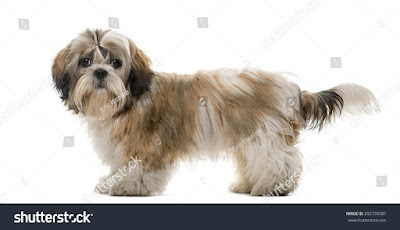
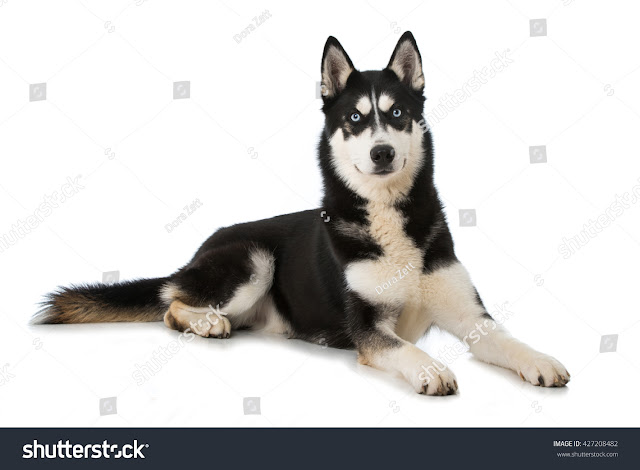
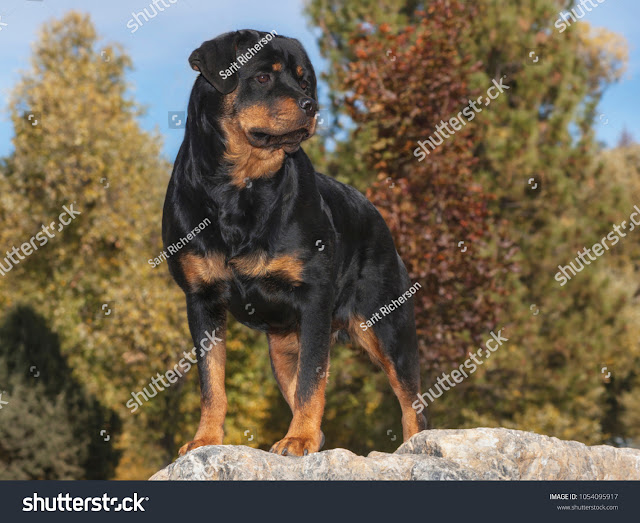
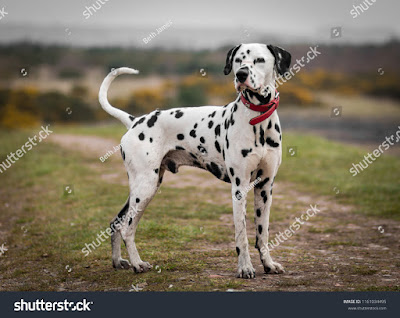

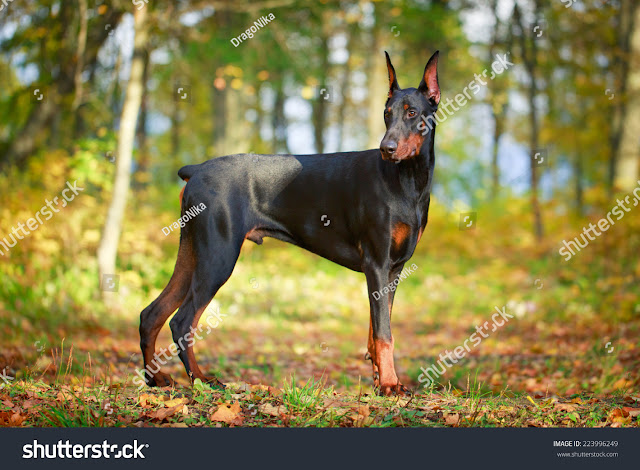
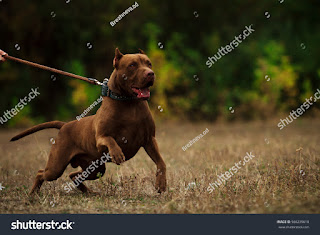
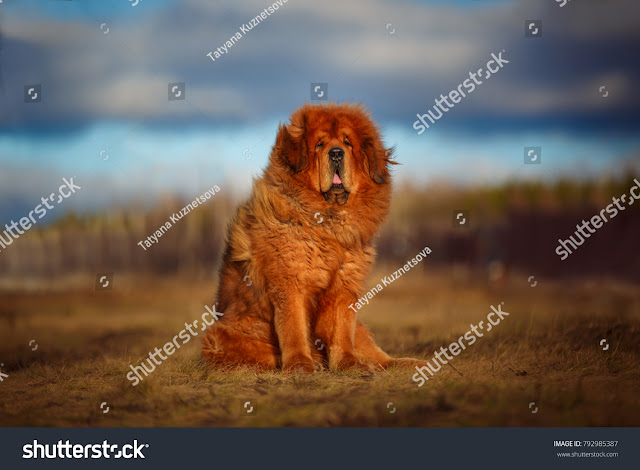


Comments
Post a Comment